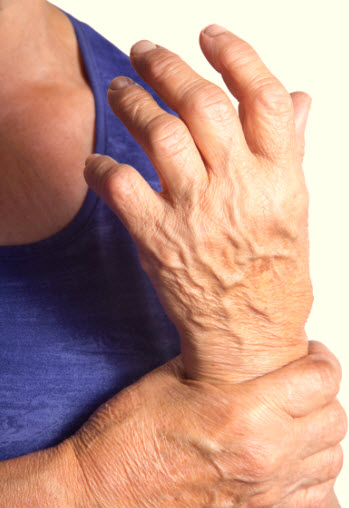Do you understand the key changes for CERs? The interplay of MDR and MEDDEV is complex.
The release of the revised guidance regarding Clinical Evaluations (MEDDEV 2.7/1 Rev. 4) in 2016 introduced some significant changes to the process of clinical evaluation. Now, even with the all but official postponement of the date of the MDR application (pending member state approval at the time of writing), if you haven’t started planning for and implementing the changes required for CERs under MDR, it will soon be too late.
好消息是,MEDDEV更新在弥合根据MDD和MEDDEV Rev编写的cer之间的差距方面取得了重大进展。3根据MDR编写的CER需要什么。然而,MDR的实施将带来进一步的变化,虽然有些变化可能相对较小(例如,术语从基本要求到一般安全和性能要求的变化),但其他变化可能对支持您的产品所需的可用临床数据产生重大影响。
The following list is not exhaustive, but does explore some of the most significant changes.
Clinical Evaluation Plan (CEP):
Although the MEDDEV introduces the idea of a Clinical Evaluation Plan (CEP), the MDR is much more explicit regarding the required elements of this plan. Most of the defined elements outline information that was likely already gathered as part of the clinical evaluation process (e.g., intended purpose, target groups, methods and parameters used to determine the acceptability of the benefit-risk profile and residual risks and side effects). However, some of the items listed in Annex XIV may require more detail for the CEP than had previously been included in the CER. In addition to these existing elements, the MDR also requires that a clinical development plan be included as a part of the CEP. The clinical development plan requires a long-term view of the planned clinical investigations related to the product, spanning from feasibility studies all the way through to post-market clinical follow-up studies.
Clinical Investigations:
The MDR contains a few more specifics than were included in the MDD or MEDDEV in regard to when clinical investigations are required for Class III products and implants. Essentially, all Class III products and implants require a clinical investigation, unless they:
1. are a line extension of an existing CE marked product;
2等同于已经CE标记的设备,其中存在允许制造商完全和持续访问技术文件的合同(见下文);
三。根据MDD/AIMDD合法投放市场,有足够的临床数据,并且符合相关设备特定的通用规范(如果已采用此类规范);或
4已明确豁免(如缝线、订书钉等),并符合适用的通用规范。
对于I类、IIa类和IIb类,MDR对何时需要进行临床研究相对沉默。与MDR相比,MEDDEV提供了更多的指导,并且自Rev实施以来,对“足够的临床证据”的要求越来越严格。4可能继续。
Equivalents:
尽管MDR仍然允许使用等效物,甚至提供了与MEDDEV中提供的基本相同的限定特征定义,但仍有额外的要求,特别是对于III类装置,这可能使等效性声明的建立和辩护更加困难因此更为罕见。
In order to establish any equivalent device, regardless of device class, the manufacturer will be required to clearly demonstrate that they have “sufficient levels of access to the data relating to devices with which they are claiming equivalence in order to justify their claims of equivalence.” Exactly what constitutes “sufficient levels of access” is not explicitly defined, but taken into context with the MEDDEV requirements for measurements, preclinical study reports, and knowledge of special manufacturing treatments, the general consensus so far is that Notified Bodies are likely to insist that manufacturers either have access to the technical documentation for any claimed equivalent, regardless of class, or be able to perform their own comparative testing on the two devices.
Requirements for equivalence claims for Class III devices are more explicitly stringent. The MDR requires that “the two manufacturers have a contract in place that explicitly allows the manufacturer of the second device full access to the technical documentation on an ongoing basis” in order to rely on any clinical investigation performed for the equivalent device. Although individual circumstances will vary, it’s hard to imagine that such agreements will be anything other than exceedingly rare, meaning that successful equivalence claims for Class III devices, outside of the context of a product line extension or similar situation, are likely to all but disappear.
CER scheduling
Per MEDDEV, CERs must be actively updated when new information is identified through post-market surveillance or, if no such information is received, according to a manufacturer-defined schedule. For significant risk devices (typically understood as Class III and Class IIb implantables), that schedule must include no less than annual updates. Lower-risk devices have a slightly more flexible schedule, allowing for scheduled updates least every 2-5 years, depending on risk and how well-established the device is.
具体地看cer,MDR并不比更新计划更明确。然而,来自CER的数据明确地输入到其他报告中,特别是要求的上市后监督报告(PMSR)和定期安全更新报告(PSUR),这些报告确实有更明确的更新计划。
The table below compares the update interval required for PMSRs/PSURs (MDR) and for CERs (MEDDEV).
| 设备类 | Required PMSR/PSUR update interval | CER update interval |
| III | Annually | Annually |
| IIb | Annually | 2-5 years |
| IIa | 2 years | 2-5 years |
| I | “when necessary” | 2-5 years |
正如你所看到的,调整更新时间表应该be easy enough for Class III devices, where both the CER and PSUR require annual updates, and for Class I devices, where the PMSR update schedule is undefined and therefore can be aligned with the CER schedule. Class IIb and IIa products, however, may not align in your current system. It is important that you start discussions now between your CER and PMS teams to ensure that both have the data they need in time to draft the required reports, lest you find yourself trying to write new reports using old data.
If you would like to speak with one of our leaders about assistance and planning for these upcoming changes, please contact us在这里.
To learn more about Covance Medical Device and Diagnostic Solutions visit us在这里to learn about our new approach to medical device development and how we can help you bring your devices to life.












